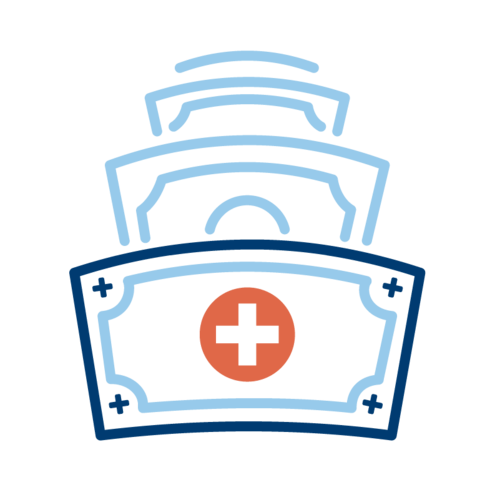Prostate Cancer Navigation
How prostate cancer navigation improves patient outcomes and generates revenue
July 6, 2021 | By Shirley Lee, MSN, MPH

Prostate cancer is the 2nd most prevalent cancer in the US and 2nd deadliest in men, but studies have shown that early detection and early treatment are very effective in keeping prostate cancer in check. Furthermore, studies have shown that effective patient navigation of cancer patients can:
- Extend overall survival by 5 months (JAMA)
- Improve 5 year survival rate from 39% to 70% (Harvard Business Review)
- Pay for 2 full-time navigators’ salaries in just over 3.5 months (Harvard Business Review)
Why is this?
Patient navigation keeps more treatment options available for prostate cancer patients. Without consistent monitoring and check-ins, the cancer can progress unnoticed and therapies, like those in the non-metastatic stage, could no longer be viable. This reduces the toolkit that urologists have to battle cancer.
Fewer options = Lower likelihood of delaying cancer
How can we scale effective patient navigation if it requires significant amounts of physician/provider time?
In order to be effective, patient navigation needs to inquire and gather information from cancer patients that are relevant to their specific cancer at their specific stage with their particular history and journey. This is a tall order because clinical workflows and expertise are resident only in clinicians and those trained in the intricacies of this cancer. Yet, reliance on the provider to do all patient navigation is impractical and not scalable. Even if a provider were to see only prostate cancer patients, that provider alone would not be able to meet all the needs of the prostate cancer patients.
What’s the solution?
Preveta helps you mobilize your most numerous healthcare professionals, Medical Assistants (MA), to become effective specialty care patient navigators. Our software guides users based on National Comprehensive Cancer Network (NCCN) prostate cancer clinical guidelines. It prompts them with relevant and specific questions to ask of the prostate cancer patient. This safely delegates the data gathering function to non-providers while streamlining medical decision-making and subsequent in-office follow-up for providers.

Gone are the days in which a patient arrives in clinic only for the provider to find that lab/scan/test results are not available. These “wasted” visits are costly, not just for patient, but also as an opportunity cost for the practice and provider. Furthermore, using AI, our system will prompt navigators to contact a patient for proactive check-in. Rather than waiting 6+ months in order to gather data about the patient’s condition and symptoms, our software’s proactive approach will minimally cut that time in half, ensuring that we detect cancer progression sooner. In fact, that’s what we’re doing. A large urology group customer reported detecting cancer progression sooner in 20% of their patients compared to waiting for the next in-office visit.
How do I make this financially viable?
Our platform not only safely delegates data gathering to your patient navigators and standardizes your prostate cancer protocol, but leads your navigators to satisfy all the requirements necessary to bill patient navigation services under the Chronic Care Management (CCM) CPT codes. With our software, customers have made their MAs into revenue generators (upwards of $120K per MA per year), turning a cost center into a profit center.
According to the Harvard Business Review, patient navigation programs:
- Paid for the salaries of 2 FT navigators in less than four months
- Generated an additional $150K in revenue per navigator per year
- Reduced no-show and cancellation rates by 3%

How do I get started?
- Assess your MA staff for specialty care navigation knowledge
- Identify your opportunities for provider time-savings and enhanced effectiveness
- Learn about CMS Chronic Care Management (CCM)
- Contact us to discuss how our technology can make this happen for you